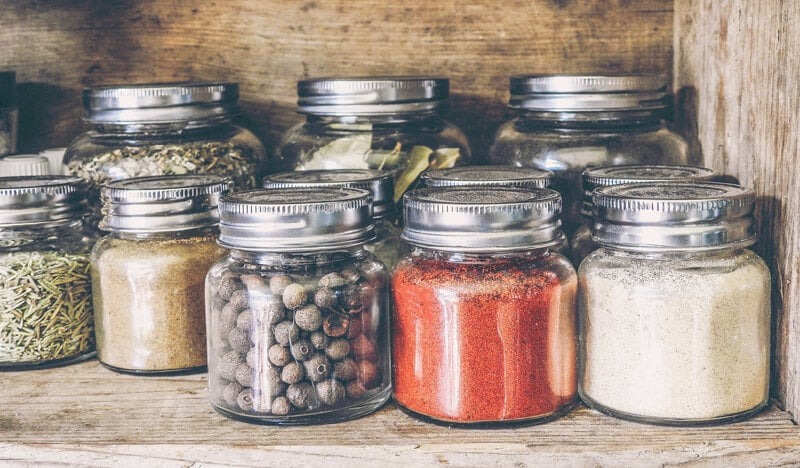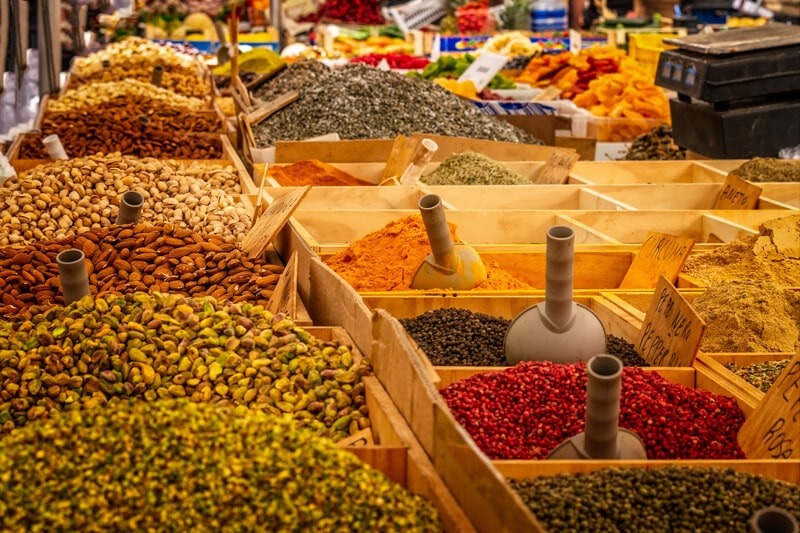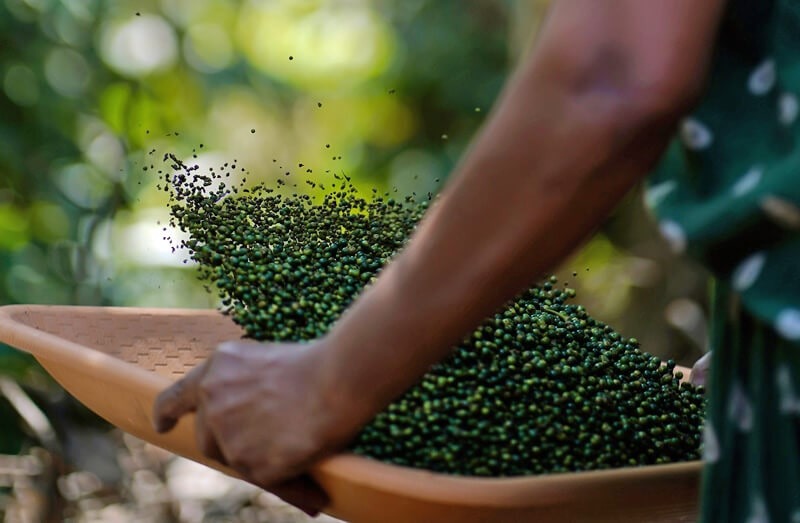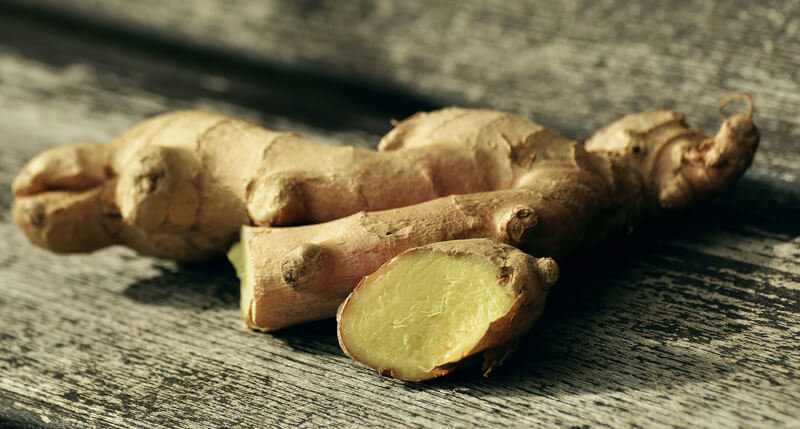Take a good look at your spice rack – cinnamon, turmeric, ginger, nutmeg, saffron, black pepper – many would sit well in your medicine cabinet. For over 4,000 years spices have been used to treat and prevent disease and ailments, enhance beauty and vitality as well as adding a zing to recipes, exciting our senses and peppering our thirst to try new flavours.
With wellness and health firmly in mind, many of us are looking to natural ways for staying healthy, strengthening our immunity and packing ourselves with vitamins to guard against illness. One obvious route is to take a closer look at the foods we eat and products we use. Spices are a prescription to immunity and act as powerful health-protecting barriers for our lifestyle and improving well-being.
 According to medical experts, spicy foods not only gratify our taste buds but also quicken the metabolism by increasing the heart rate and subsequently our temperature due to the chemical called capsaicin. Most spices are packed full of healthy compounds, rich in phytochemicals, which are healthful plant chemicals. They fight inflammation and reduce damage to our body’s cells.
According to medical experts, spicy foods not only gratify our taste buds but also quicken the metabolism by increasing the heart rate and subsequently our temperature due to the chemical called capsaicin. Most spices are packed full of healthy compounds, rich in phytochemicals, which are healthful plant chemicals. They fight inflammation and reduce damage to our body’s cells.
Recipes handed down by our grandparents often include the addition of a spice or two. Cinnamon, for example, is a key ingredient in those good old-fashioned cookies or a cinnamon stick to stir in a hot toddy to help a cold. Physicians from the Middle Ages used cinnamon to help treat a cough, hoarseness and sore throats, while ancient Egyptians used it as part of their embalming rituals. It’s one of the oldest and most popular spices. Ceylon cinnamon is traditionally harvested from a tree that is native to Sri Lanka. It has a beneficial effect on glucose metabolism and body weight, and contains antioxidants called proanthocyanidins, which are also found in grapes and green tea.
If it’s a rich mustard-yellow colour, it’s Turmeric and often referred to as the world’s most well-known superfood spice. Turmeric is known for its anti-inflammatory properties, as well as its ability to help fight depression and act as an antiseptic. According to experts at the Texas M.D. Anderson Cancer Centre, Turmeric can help inhibit the growth of cancer cells throughout the body. Turmeric grows wild in theforests of South and Southeast Asia, where it is collected for use in the classical Ayurvedic Indian medicinal treatment.
Feeling nauseous, suffer from motion sickness or have a cold, Ginger is the spice for you, a popular home remedy. Antioxidants and other nutrients in gingermay also help prevent or treatarthritis,inflammation and various types of infection. In India, Ginger is commonly made into a paste to relieve a headache by placing it on the temples, while in Japan it is used to help blood circulation. Ginger first appeared in the southern parts of the ancient China. Today, India is the largest producer.
 Nutmeg is a spice present in many kitchens worldwide. Its warm, nutty flavour pairs well with many foods, making it a popular ingredient in sweet and savoury dishes as well as in mulled wine and chai tea. Although it’s more often used for its flavour than its health benefits, nutmeg contains an impressive variety of powerful compounds that may help prevent disease and promote overall health. This spice can help to soothe indigestion, detoxify the body, boost skin health, reduce insomnia and improve blood circulation.
Nutmeg is a spice present in many kitchens worldwide. Its warm, nutty flavour pairs well with many foods, making it a popular ingredient in sweet and savoury dishes as well as in mulled wine and chai tea. Although it’s more often used for its flavour than its health benefits, nutmeg contains an impressive variety of powerful compounds that may help prevent disease and promote overall health. This spice can help to soothe indigestion, detoxify the body, boost skin health, reduce insomnia and improve blood circulation.
Popular in Spanish dishes such as paella, Saffron contains a wide range of nutrients including vitamin C, potassium, folic acid and calcium. It’s an antioxidant, which means it helps to fight the free radical damage that leads to health conditions like cancer and heart disease. One variety of Saffron is grown in Castilla-La Mancha, a region in central Spain, while another is grown exclusively on Azerbaijan’s Absheron Peninsula. It is usually grown in small quantities on farm fields and is the most expensive spice in the world.
 Considered to be the ‘king of spices’ Black Pepper owes its origins to Kerala in India. Pepper was used by the Greeks, Romans and Chinese for medicinal purposes. In medieval times it was used as currency when it was known as black gold. Scattering Black Pepper on your food helps to stimulate hydrochloric acid in the stomach to aid digestion and absorb food. It has carminative properties which help to reduce discomfort and gas build-up in the intestines and its active compounds have a role in boosting white blood cells, which the body uses to fight off invading bacteria and viruses.
Considered to be the ‘king of spices’ Black Pepper owes its origins to Kerala in India. Pepper was used by the Greeks, Romans and Chinese for medicinal purposes. In medieval times it was used as currency when it was known as black gold. Scattering Black Pepper on your food helps to stimulate hydrochloric acid in the stomach to aid digestion and absorb food. It has carminative properties which help to reduce discomfort and gas build-up in the intestines and its active compounds have a role in boosting white blood cells, which the body uses to fight off invading bacteria and viruses.
Warm, exotic, sensuous, pungent, intoxicating, mysterious are some of the descriptive notes to describe the aromas and flavours of spices and dishes from destinations and distant lands. A madras curry evokes images of the bustle and colour of India, the silky saris, Bollywood and rickshaws. The bold orange of saffron transports us to rhythmic flamenco and fiestas of Spain and the gigantic steel pans laden with paella. We are reminded of the spice markets of Morocco, the maze of alleyways packed high with colourful spices with vendors chasing and competing for trade. Spices not only link us to travel routes but bring us a natural source of health benefits and maybe additional items to our medicine cabinet!
The History of Spices
In the 16th century, the Moluccas in Indonesia were nicknamed the “Spice Islands”. This was due to the large number of aromatic plants that grew on this archipelago. The islands were an important strategic base for the highly profitable spice trade when nutmeg and cloves largely drove the spice trade and which were only native to these islands. Since spices were once worth their weight in gold, control of the Moluccas was synonymous with extreme wealth.
 Spices dig deep into our history, when they were traded for their medicinal purposes and flavours from many corners of the world. Spices from China, Indonesia, India, and Sri Lanka, (known then as Ceylon) were transported overland by camel caravans by the Arab middlemen who controlled the spice trade until the sea route to other spice-producing countries were discovered. The lack of refrigeration and poor standards of hygiene meant that food often spoiled quickly, so spices were in great demand to mask the flavour of food that was far from fresh. The value of spices was determined not only by their taste and status as luxury items, but also their medical properties. Spices were believed to have important medical qualities and were ingredients in medieval pharmaceuticals, and are just as important to our health today.
Spices dig deep into our history, when they were traded for their medicinal purposes and flavours from many corners of the world. Spices from China, Indonesia, India, and Sri Lanka, (known then as Ceylon) were transported overland by camel caravans by the Arab middlemen who controlled the spice trade until the sea route to other spice-producing countries were discovered. The lack of refrigeration and poor standards of hygiene meant that food often spoiled quickly, so spices were in great demand to mask the flavour of food that was far from fresh. The value of spices was determined not only by their taste and status as luxury items, but also their medical properties. Spices were believed to have important medical qualities and were ingredients in medieval pharmaceuticals, and are just as important to our health today.
Tips to spice up your diet
Herbalist Michael McIntyre recommends flavouring food with medicinal spices such as cinnamon, nutmeg and cardamom as well as ginger, horseradish, garlic and onions. (Ancient Egyptian records suggest that the slaves who built the Pyramids were given onions and garlic for strength and to ward off infections).
Try blending equal quantities of freshly peeled garlic and ginger and keep in the fridge to use to flavour soups and stems.
Sprinkle turmeric on various savoury dishes to help ease irritable bowel syndrome, reduce joint pain and boost immunity.
Cook or make drinks with fresh ginger to reduce inflammation for conditions such as rheumatism and heart disease.
Grind lots of black pepper on food to help your body absorb more nutrients.
A word of caution
With any health problem it is always better to check with your GP to ensure it is safe to take spices for medicinal purposes.











